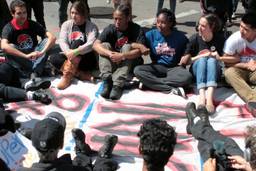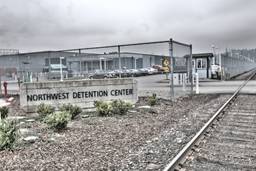Instead of playing with their friends, millions of children around the world spend the best years of their lives in factories, brothels, mines, and even as young soldiers.
A report by the U.S. Department of Labor issued this week finds there are 218 million children between the ages of 5-17 around the world enduring exploitive conditions in jobs that are well beyond their physical or mental capacity.
The report, “2008 Findings of the Worse Forms of Child Labor,” details the forced labor of children around the world and describes what 141 countries and territories are doing to meet their international commitments to reduce child slavery.
The report finds that children continue to be forced into war and prostitution and trafficked within countries and across borders.
They work in the fields, sweatshops, factories, brothels and the streets. They were found in the fields of Colombia, working on carpet production in Nepal, India and Pakistan and pulling cotton in Burkina Faso and Benin, making charcoal in Brazil, pornography in Russia, and bamboo and soy in Burma, among many other places.
The highest portion of children were found in agriculture: 69 percent; the services sector: 22 percent; and the industrial sector: 9 percent.
The Dept. of Labor’s Office of Child Labor, Forced Labor and Human Trafficking collects the material from U.S. embassies and consulates, foreign governments, nongovernmental organizations, and international agencies. Staff also conducted field visits to some countries.
The department also released an updated list of 122 goods from 58 countries believed to be produced by child labor. In agriculture, the most common products are tobacco, sugarcane, coffee, rice, cocoa, cotton. In factories: bricks, carpets, clothing and footwear. In mined/quarried goods: gold and coal.
“Child labor and forced labor are inexcusable abuses of human rights, and…continue to be a problem in 21st century society. We must do everything in our power to end these shameful practices,” Secretary of Labor Hilda L. Solis said.
The new report covers March 2008 to February 2009, and notes that children are among the most affected in times of global economic crisis. It identifies countries where progress has been made and other countries that have to strengthen their commitment.
“[A]s I engage in a dialogue with my international counterparts, I will continue emphasizing the importance of eradicating forced labor and child labor,” Solis said.
Forced recruitment into wars continues in a number of countries.
For example, the report found that rebel groups, self-defense militias and government forces in the Central African Republic, Chad, Afghanistan, Democratic Republic of Congo, Colombia, Nepal, Pakistan, Somalia and Yemen recruited children as child soldiers and for war work, including as scouts, porters, assistants to adult solders and in some cases, sex slaves.
Iraqi children were recruited by insurgent groups for war tasks, such as planning explosive devices and as suicide bombers.
There has, thankfully, been some progress in efforts to protect children. During the reporting period:
- Ecuador included provisions for prohibiting child labor and establishing a minimum age for work in the country’s new Constitution – which was adopted September 2008.
- South Africa adopted the children’s Amendment Act, which defines and prohibits the worst forms of child labor.
- The Albanian Penal Code was amended to categorize the exploitation of children for labor or forced servces as a penal crime.
- Moldova adopted a family law which includes child labor as a form of economic violence against children.
- In Jordan, the government amended labor laws so they would apply to domestic and agricultural work.
And in several countries, new laws were put in place against human trafficking, including the trafficking of children. These countries include: Algeria, Argentina, Burkina Faso, Cambodia, Jordan, Mozambique, Oman, Paraguay, Tanzania, Thailand and Zambia. In Egypt, the Child Protection Law was amended to specifically criminalize trafficking in children.
In Cambodia, eight foreigners were sentenced to 10 to 28 years imprisonment for child sex tourism and two U.S. citizens were deported to be prosecuted for sex tourism under the U.S. Protect Act of 2003.
In some countries, new programs were launched that offer financial incentives for parents to pull their children out of labor and enroll them in school, which followed the examples of Brazil and Mexico that put those kinds of programs in place earlier.
In April 2008, Guatemala initiated “Mi Familia Progressa” (My Family Progresses) program which offers small cash transfers to households if the children were taken out of work and enrolled in school. The Guatemalan government says 3,700 were integrated back to school.
Mozambique created a school scholarship program to encourage parents to keep their children in school by covering the costs of children’s school materials and fees. Panama offers a similar program which provided services to 2,500 children.
Countries that maintain laws that allow children to work in hazardous conditions include India, Nigeria, Pakistan, Paraguay and the Solomon Islands.
Finally, the report states:
It is our intent that this report not only provides current updates on the child labor situation in the countries
and territories on which it reports, but that it serves as a resource for governments around the world seeking ways to offer their children a path away from exploitive
child labor and into education. May our journey for a world without exploitive child labor continue, as the world’s children deserve nothing less.







